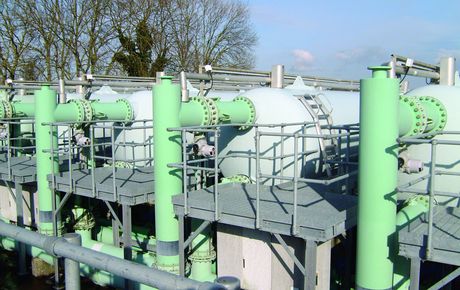Wireless networks in the water and wastewater industries

Wireless networking continues to gain acceptance in industrial applications, including the water and wastewater industries.
With the cost of copper continuing to rise, and wireless manufacturers creating newer products that are reliable and easy to implement, the use of wireless devices is continually growing. Reduced infrastructure, simplified network installation and commissioning, enhanced reliability via flexible, self-healing topologies, increased efficiency and reduced labour costs also contribute to its growing popularity.
Wireless monitoring and control can provide benefits for new installations or retrofit projects. Typically, the most obvious benefits are significant cost and labour savings that result from the elimination of cables, conduits and the work required to install and maintain them. The ease of wireless installation also allows for a reduced start-up phase for a project, meaning that the plant can be operational in less time than for a wired network. With the ability to sprinkle battery-powered sensors where they are most needed in the plant for the gathering of more information about the process, it is possible to improve process monitoring and to enhance diagnostic data that is useful for maintenance regimes.
Wireless is generally suitable for plants of most sizes and its inherent flexibility makes it easy to expand a small network. There can also be benefits in adding a wireless network to existing wired installations. For example, the modular nature of some systems allows the user to have the choice of a fully wired loop for control and monitoring, a fully wireless control and monitoring system or wired control with wireless monitoring.
When considering wireless for monitoring and control or for monitoring only, it is recommended that a site survey be conducted to set the stage for a successful installation. Companies may offer tools and software to assist with a site survey and provide survey technicians that can inspect a potential site for possible problems specific to a wireless installation and make recommendations to overcome them.
One of the most important things to check is the viability of reliable wireless communication between field units and the control room. Some situations may require a site trial in addition to a survey to make sure wireless technology can meet special demands.
The experience of a large wastewater treatment plant in the UK which faced a significant problem is a good example of how wireless networking can help. The plant needed to retrofit valve actuators that controlled scum skimmers on several aeration tanks. Originally, the actuators were hardwired to the control room through a conduit that was embedded in concrete. To hardwire the actuators for network control, the plant was presented with two very expensive options. The first was to demolish the existing concrete structure to install new conduit and then rebuild it. The second was to run external conduits on the surface of the structure. However, in order to avoid trip hazards and other health and safety issues, all external conduits needed to be clear from walkways. Therefore, any new conduit would need to be located along the edge of the aeration basins. If that option was selected, the basins would have to be decommissioned during installation.

In both cases, the plant faced considerable costs. With an average distance of over 100 m from actuator to control room, plus the associated cost of decommissioning the tanks during construction, the estimated cost to run the new wiring was in excess of £1 million. The plant therefore decided to install a wireless solution, which was achieved at a fraction of the estimated cost of the hardwired options. In addition to eliminating the need for control wiring, another major benefit has been the ability of the wireless-equipped actuators to communicate vital actuator data logger information to the host control system for planned maintenance and troubleshooting. Data transmitted wirelessly includes valve torque profiles, operational start profiles, vibration and temperature trend logs, and an event log. Specific asset management information includes running time, average torque, number of starts and service or maintenance alarms.
Although this example involves valves, wireless technology is equally suitable for many diverse water industry applications including pump station control, water quality monitoring, leakage detection in distribution networks, flow metering, rainfall monitoring, tank level monitoring, treatment plants, storm tanks and large-network SCADA and distributed control systems, camera surveillance and intruder alarms.
In conclusion, it can be said that advances in wireless technology have proved themselves to be reliable, secure and cost-effective. While it is true that some applications may not be suitable for wireless control, virtually every plant manager should become familiar with the technology and carefully consider its use when the time comes for a major upgrade, a new installation or simply extending an existing system. It works well and can result in substantial cost savings and productivity benefits. In fact, the installed cost benefit of wireless technology is too appealing to be ignored whenever a new or retrofit installation is under consideration.
Mineral processing: a eulogy for analog
Leading mines have already accomplished an automated, digitally connected mine and are reaping...
What is TSN and do we really need it?
Whether or not TSN becomes an industry-wide standard remains to be seen.
AI and condition monitoring
The rise of artificial intelligence is seen as particularly useful in the field of condition...












